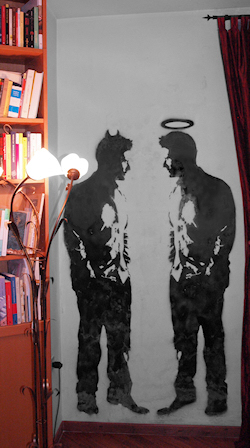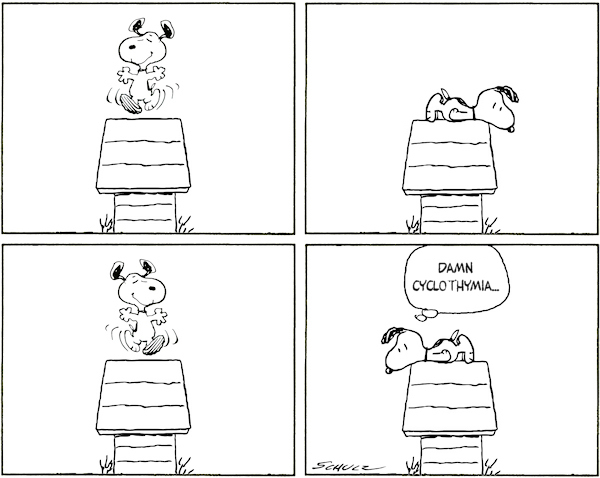Some years ago I have been diagnosed a mild form of cyclothymia, a chronic mood disorder characterized by periods of hypomanic symptoms alternating with periods of depression. Long before recognising this disorder, as a science writer and magician I have professionally spread the sense of Wonder within my books, lectures and shows, choosing for myself the (rather odd) job title of ‘Wonder Injector’. Only recently I have acknowledged that my sense of awe is a precious gift sprang up from my cyclothymia, a endless and healthy flow of wonder feeding my job, my books and my creativity.

The hyper-productivity of the ‘high’ moments provides me enough energy to fulfill boring tasks – like sorting hundreds of documents related to an obscure French mystery – but also to add them the touch of wonder needed to make them interesting and inspiring; it is what I tried to do in Rennes-le-Château (Aude, France), where I worked on the creation of the world-known museum based on the story behind Dan Brown’s The Da Vinci Code: an exciting quest for hidden treasures, coded parchment and lost maps.
The other side, the dark one, has an opposite gift for me: a precious sense of failure and humbleness, which balances the extreme optimism and inflated self-esteem linked to the euphoric moments.
Considering the sense of Wonder my personal gift to the world, I have endorsed the magical manifesto of Eugene Burger and Robert Neale, who consider the experience of magic and mystery a powerful cure for the disenchantment of modern society. In their book Magic And Meaning they go at the very roots of magic, identifying in the archetype of the trickster the model for the contemporary ‘Wonder Injector’. And from a cyclothymic point of view, it is funny to identify a number of similarities between the cyclothymic and the trickster, liminal figures on the boundary between polarities, dealing (and playing) every day with contradictions and paradoxes.
It is not clear if Robert Neale refers to trickster (as he does) or to the cyclothymic in this passage:
Sure he exhibits every possible mood and therefore all the negative feelings possible, but even these are, somehow, undergirded by good humor. There is no absence of tragedy in the tales, and full mention of every conceivable kind of suffering. One could make the case easily that trickster tales are more realistic about the existence we lead than any other kind of story. They are impressive on this account because they do it without making promises about what used to be or will be in some fantastic future. Rather, they just lay out a frank perception of reality with good humor. […] He sees all the problems. Indeed, he illustrates them! […] Trickster confidence is boundless. Call this exuberance joy. Or call it disillusioned delight. Trickster’s gift to humanity is joyful optimism. (1)
Maybe the philosopher Alain de Botton would rephrase the last two words with
‘cheerful despair’, that far more fruitful mood [that] lies beyond pessimism. (2)
Isn’t Stella Marrs a trickster, expressing in the funniest way the ‘cheerful despair’ in this postcards?

Image by Stella Marrs.
And isn’t tricksterish the title Everyone Loves a Good Train Wreck chosen by Eric G. Wilson for his book about morbid obsessions? The writer affirms the existence of a status beyond mere gloom:
a richer state, attuned to the mournful marriage between death and beauty. The fragility of the morning rose moves us to appreciate its brilliance right now, before it’s too late. This was a category of sorrow that encouraged me to find in my affliction moments of loveliness. (3)
The trickster figure provides my cyclothymia a vital and joyous frame in which the acceptance of contradictions and chaos is a mere step in a creative process, through which enriching my personal narrative guided by a liminal model between spirituality and disenchantment.
In this spirit, I have created a blog (in Italian) collecting ideas related to cyclothymia and its narrative frame, providing ‘cheerfully desperate’ material with the aim of fostering the awareness for such disorder and fighting its stigma.

1. Eugene Burger & Robert Neale, Magic And Meaning, Hermetic Press 1995, p.102.
BY-NC-SA 4.0 • Attribution-NonCommercial-ShareAlike 4.0 International